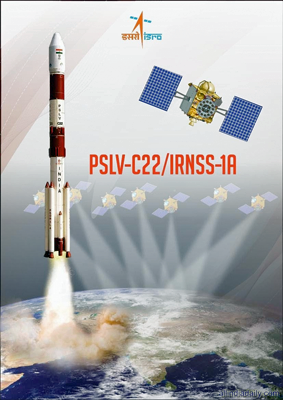
According to a new report in The Hindu online publication, work has begun in Bengaluru, India, to assemble a substitute navigation spacecraft, which became essential after the main backup was lost in a failed launch on August 31, 2017.
IRNSS-1I was earlier approved as a ground spare, to be sent to space in an emergency. The Indian Space Research Organisation has been training a team from an industry consortium to assemble this spacecraft and its lost fellow satellite, IRNSS-1H.
M. Annadurai, director of ISRO Satellite Center (ISAC), Bengaluru, said the current approval is for seven navigation spacecraft (all of which are in orbit) and two spares — IRNSS-1H and IRNSS-1I. Should a new backup be sought and approved, it may be part of another model of outsourcing of its satellites to the Indian industry. ISRO has just begun the process of identifying a set of external partners who would assemble its future satellites, he noted. Until now all Indian spacecraft have been assembled at ISAC by its engineers.
Back in December, the consortium of six industries was given six months to work on each spacecraft. The deadline for IRNSS-1I was around May of 2018. Dr. Annadurai said that as of now, the timeline remained the same. The launch of 1I, when it was ready, would also have to align with ISRO’s other missions, he said.

ISRO awaits the report of the failure analysis committee, which is looking into reasons why the launch failed, before it returns to launch its next missions. The seven IRNSS spacecraft, from 1A to 1G, are part of the 1,400-crore GPS-like fleet for India, called NavIC (Navigation in Indian Constellation). They were put in orbit between July 2013 and April 2016 and have a life of 10 years each.
Soon after all of these satellites were in place, all three atomic clocks in IRNSS-1A failed, warranting that spacecraft's replacement. IRNSS-1H was sent up on a PSLV rocket but was not released from the upper heat shield of the rocket and has been falling slowly to Earth in the same state, embedded in the heat shield — this is where 1I enters — as a backup to both IRNSS-1A and IRNSS-1H.
The atomic clocks on the other satellites are being used sparingly to extend the clocks’ life in space. ISRO chairman A.S. Kiran Kumar recently said there was no urgency as the remaining six are working as planned.

